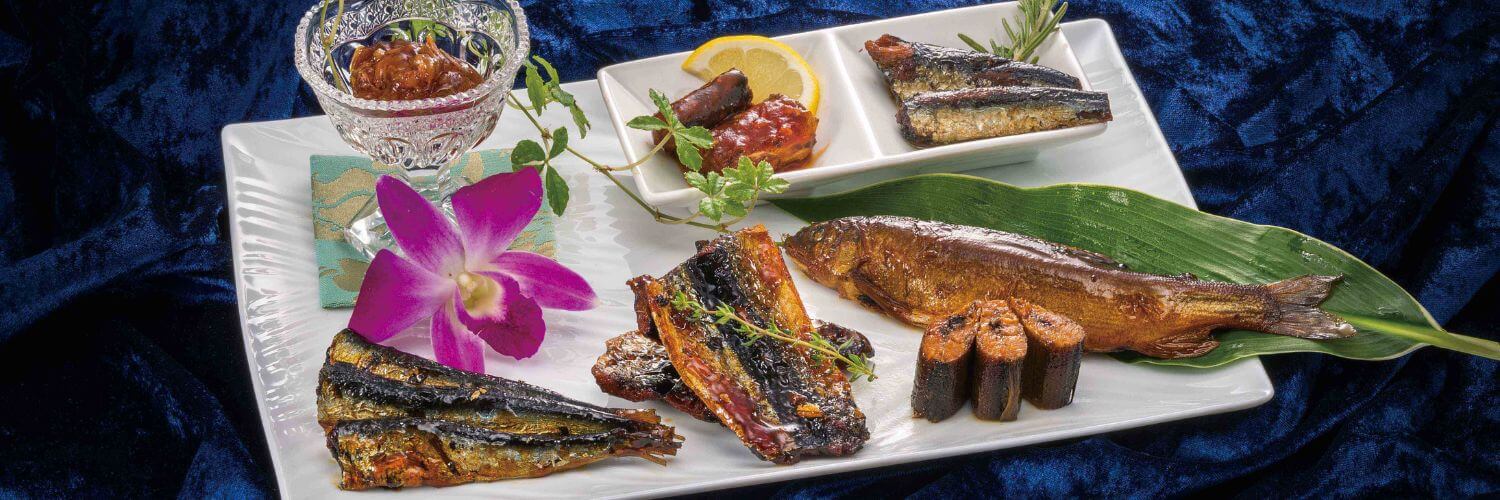
Aichi prefecture offers a unique culinary experience rooted in its rich Samurai culture and history. Find out what Samurai cuisine is and what kind of regional cuisine it offers.
As the industrial hub of Japan, Aichi prefecture is most famous for being the headquarter of Toyota Motors. Nestled in the middle of Japan, Aichi is surrounded by the Pacific to the south and an abundance of mountains in the north.
Aichi is also the birthplace of Japan’s three legendary samurais, Oda Nobunaga, Toyotomi Hideyoshi, and Tokugawa Ieyasu. Intertwined with its rich samurai culture, Aichi offers a variety of unique foods and is full of “Samurai Spirit.”
Samurai Cuisine

Three of Japan’s most important samurais adored the Aichi prefecture. Therefore, local cuisine is sometimes referred to as “Samurai Cuisine.” The core of Aichi’s “umami” is in its brewing culture and tradition, and the region’s flavor tends to have a deeper flavor. Miso, soy sauce, and mirin all contribute to Aichi’s flavor-rich food items that wowed the toughest samurais in Japan.
Hundreds of years ago, three samurais lived their lives devoted to achieving Japan’s infinite possibilities. Now, an organization called “Aichi Food Export Workshop” strives to promote Aichi’s samurai cuisines worldwide. Together with chefs from around the world who resonate with samurai spirits, Aichi Food Export Workshop believes Aichi offers infinite possibilities in creating new food scenes around the globe.
Aichi’s Regional Dishes

In modern-time, Aichi offers a variety of food items. Hitsumabushi (marinated eel rice bowl) is one of the most beloved foods in the area. Tebasaki (Japanese chicken wings), Ogura toast (red bean paste toast), and kishimen are also popular items from the region.
Of course, there are many menus that use Aichi’s famous miso, soy sauce, and mirin. Let’s look at some of the more distinctive flavors of Aichi prefecture spiced up with its samurai spirit.
Owari Region

The Owari region of Aichi prefecture has its capital city, Nagoya. The most famous food item from this region is mame-miso (bean miso). Usually, miso loses its flavor when simmered for a more extended time.
Aichi’s mame-miso is different. Due to the region’s miso-brewing culture, Aichi’s mame-miso excels in flavor. The more you simmer mame-miso, the deeper the flavor becomes. Thus, the Owari region’s local cuisine includes dishes like miso-simmered udon and miso dengaku (miso-glazed).
Similar to mame-miso, tamari soy sauce is also an important ingredient in this area. One of the local menus, “Kashiwano Hikizuri,” a suki-yaki using chicken, uses tamari soy sauce as the broth base. One bite is all you need to enjoy the bursting umami flavors.
Mikawa Region

The Mikawa region offers plenty of seafood, thanks to Mikawa Bay. Shellfish, especially clams, are abundant in this area. In Toyohashi city, a delicacy called “kushi-asari” (skewered dried clams) attracts tourists. Back in the samurai era, the Shogun (the head of samurais) received kushi-asari as a gift from the region.
Another local dish is “Arame (kelp) and peanuts.” It’s a simple dish that uses sugar, soy sauce, and mirin, bringing an interesting flavor.
Hatcho-miso is also a delicacy in this area. It’s a kind of mame-miso, but you can only call it “Hatcho-miso” when it’s made in Hatchocho of Aichi prefecture and passes a national miso standard. Samurai in the region, including Ieyasu’s troops, used to carry baked Hatcho-miso. “Nimiso,” a simmered root vegetable dish, is truly a timeless dish enjoyed in the past and the present.
Enjoy the Unique Taste of Aichi
Savoring the special dishes of Aichi prefecture might take you back in time to experience the spirit of samurai. Discover the new flavors at home by trying out food items from Aichi prefecture available at Umami Insider!
